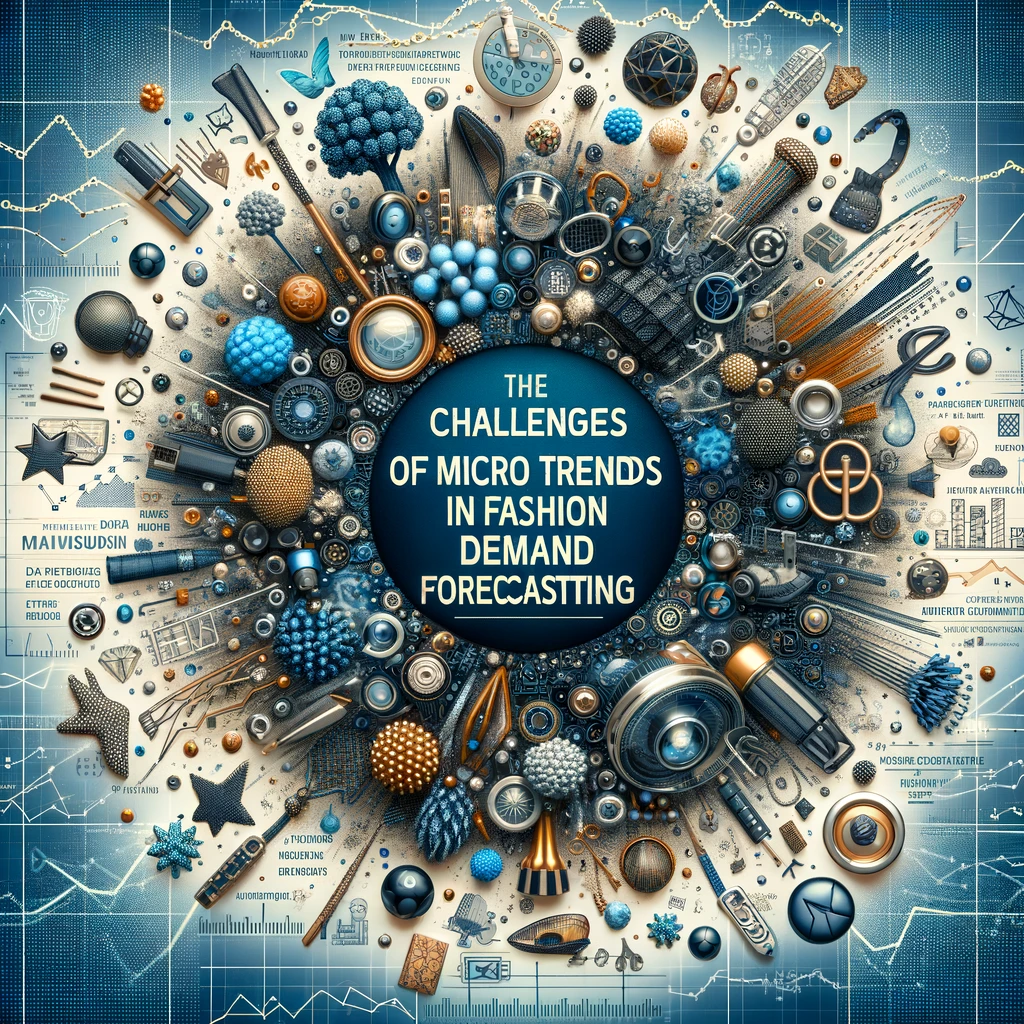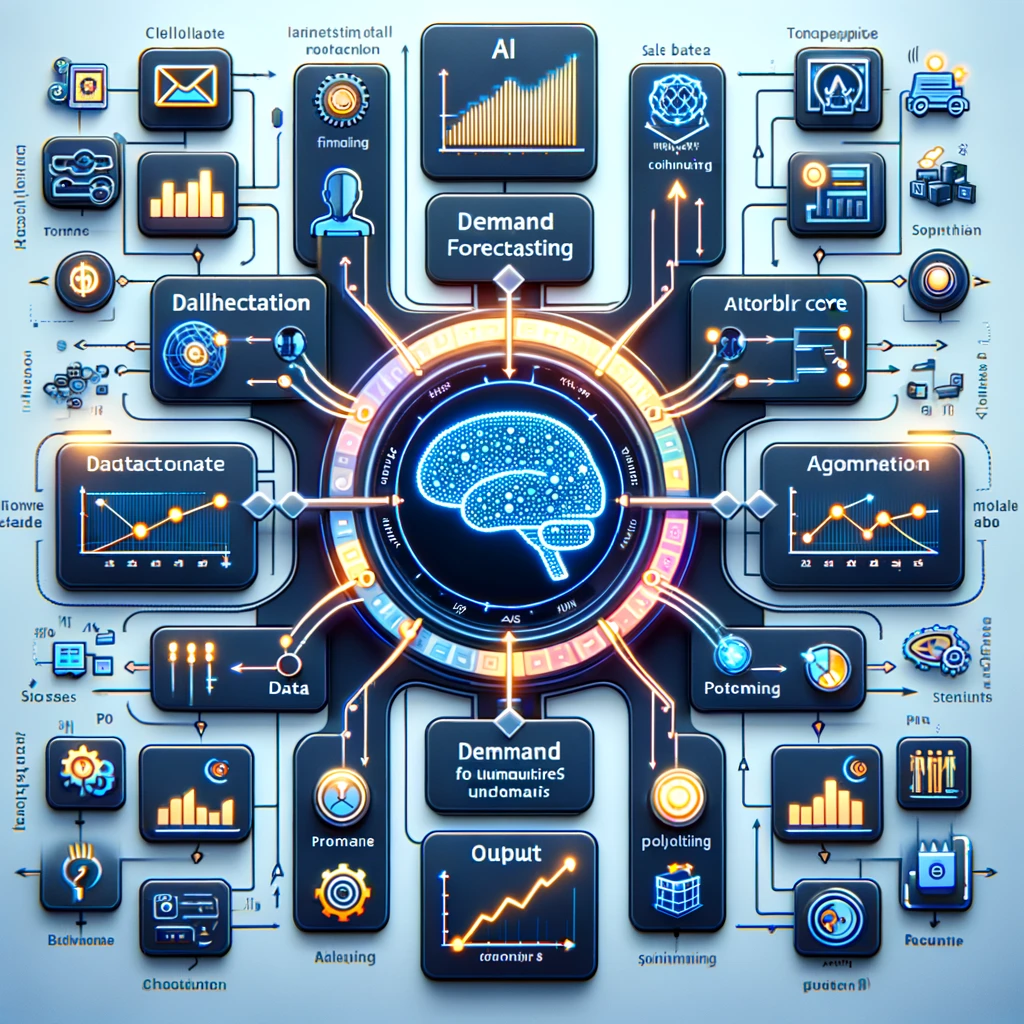CHRIS JONES | FEBRUARY 12, 2024 | 5 MINUTE READ
With its ever-evolving trends and rapid-fire product cycles, the fashion industry faces a significant challenge in accurately predicting demand. Traditional forecasting methods, often relying on historical data and expert intuition, struggle to keep pace with the industry's dynamic nature, leading to overproduction, stockouts, and a negative environmental and economic impact.
Enter artificial intelligence (AI), a transformative force poised to revolutionise demand forecasting in the fashion industry. AI-powered algorithms, capable of analysing vast amounts of data from various sources, can provide brands and retailers with unprecedented insights into consumer behaviour and market trends, enabling them to make more informed decisions about production, inventory management, and product development.
Navigating the Rapids of Micro-Trends
The rise of micro-trends, fleeting styles that emerge and fade quickly, has further complicated the demand forecasting landscape. These trends, often driven by social media and influencer culture, can vanish as quickly as they appear, leaving brands scrambling to adapt.
Traditional demand forecasting methods have several limitations that make them less effective in the current fashion landscape:
1. Historical sales data: Historical sales data can be a valuable indicator of future demand, but it is often insufficient to predict micro-trends accurately. Micro-trends may not have enough historical data to base predictions on, and they may be driven by factors not captured in historical data, such as social media trends.
2. Expert intuition: Expert intuition can be valuable but subjective and can be influenced by personal biases. Experts may not be able to accurately predict micro-trends, as they may not be aware of all the factors driving them.
3. Static trends: Traditional forecasting methods often assume that trends are static and unchanging. However, trends in the fashion industry constantly evolve, and micro-trends can emerge and fade quickly. As a result, traditional methods may be unable to keep up with the pace of change.

Challenges of micro trends in traditional demand forecasting: powered by DALL.E
How AI-powered Demand Forecasting Overcomes These Challenges
AI-powered demand forecasting overcomes the limitations of traditional methods by using more sophisticated algorithms and analysing a more comprehensive range of data sources. Some of the specific ways in which AI can help fashion companies forecast demand more accurately include:
1. Analysing social media data: AI can analyse social media posts, images, and videos to identify emerging trends and patterns in customer behaviour. This can provide brands with early insights into micro-trends that may not be apparent from other data sources.
2. Tracking customer behaviour: AI can track customer behaviour across various channels, including online browsing, in-store purchases, and social media interactions. This data can be used to identify trends and predict demand.
3. Understanding global trends: AI can analyse data from around the world to identify global trends that may not be apparent in any one region. This can help brands to identify trends that are likely to have a significant impact on their business.
4. Utilising advanced algorithms: AI algorithms go beyond traditional forecasting methods by employing more sophisticated techniques like machine learning and neural networks. These algorithms can learn from historical data and identify complex patterns that would be difficult to detect using traditional methods.
5. Embracing real-time data: AI can leverage real-time data streams to provide up-to-date insights into demand patterns. This allows brands to make more timely and informed production and inventory management decisions.
By overcoming the limitations of traditional forecasting methods, AI-powered demand forecasting can provide fashion companies with a number of benefits, including:
Increased accuracy: AI can improve the accuracy of demand forecasts, reducing overproduction and stockouts, which can lead to cost savings and improved profitability.
Enhanced customer satisfaction: By providing better insights into customer demand, AI can help brands make better product decisions, which can lead to increased customer satisfaction.
Reduced environmental impact: By reducing overproduction and waste, AI can help reduce the fashion industry's environmental impact.

The interconnected nature of AI-powered Demand Forecasting: powered by DALL.E
Beyond Forecasting: The Transformative Power of AI
AI-powered demand forecasting is not merely a tool for predicting demand but a catalyst for transformation across the fashion industry. AI can be used to:
1. Design Personalised Products: AI can analyse customer data to create personalised product recommendations and suggestions, ensuring customers find items that align with their style and preferences.
2. Optimise Supply Chain Management: AI can use historical supply chain performance to suggest production adjustments that optimise inventory intake according to current sales and changes in predicted demand forecasts.
3. Minimise Environmental Impact: AI can help fashion companies reduce their environmental impact by minimising waste and optimising resource use, promoting sustainable practices and reducing the industry's carbon footprint.
The Future of Demand Forecasting: A Brighter Path Ahead
As AI technology advances, we can expect to see even more innovative applications based on use cases that revolutionise how fashion companies do business. AI could be used to:
1. Create Virtual Try-On Experiences: AI could power virtual try-on experiences, enabling customers to virtually try on different products and see how they look on them, reducing the need for returns and improving customer satisfaction.
2. Develop Predictive Fashion Analytics: AI could develop predictive fashion analytics to anticipate future trends and consumer preferences, providing brands with a roadmap for product development and marketing strategies.
3. Embrace AI-driven Innovation: AI will continue to play an increasingly significant role in shaping the fashion industry's future, enabling brands to adapt to the ever-changing landscape and thrive in the years to come.
Conclusion
AI-powered demand forecasting is a game-changer for the fashion industry. By helping brands make more accurate predictions, optimise supply chains, and embrace personalisation, AI can reduce overproduction, improve customer satisfaction, and reduce the industry's environmental impact. As AI technology develops, we can expect to see even more transformative applications that revolutionise how fashion companies do business. The fashion industry's future is bright, and AI is at the forefront of this transformation.
Author Chris Jones
Chris has helped global brands, retailers, and manufacturers align people, processes, and technology for over three decades, driving transformation projects to maximise business impact.
This article is also published on LinkedIn:


